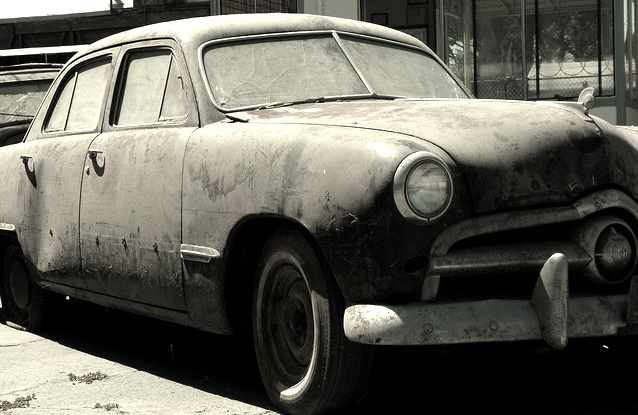Ran When Parked: Classic auto engine inspection tips
Author: David Cerotzke
Barn finds are amazing, finding untouched one owner classic autos is always a score! But you need to know what you're looking for when inspecting the engine for any red flags or damage. Learn some basic tips here!
Category: Journal | Tags: Mechanics Auto tips | Date: October 29, 2014 (updated: September 17, 2021)

Sooner or later, you’ll find yourself beholding a screen full of Craigslist adverts for “Classic” vehicles. Most folks, at some point in their life, will feel the urge to start restoring a vehicle. But how do you know if what you’re looking at can be saved without having to take out another mortgage? This article will cover some of the warning signs you need to see in an engine before your bank account does.
Check the Oil
This sounds basic, and it is, but if an engine has been sitting for an extended period, there’s a chance that it hasn’t any oil left. At all. An empty crankcase means that moisture will condense there and start forming corrosion over the crank shaft and about the main bearings. If that is the case (and believe you me, it probably will be), the motor will be seized. This means that even if you put oil back in it, not only will it not start, the starter won’t even be able to move the motor.
Check for Oil in the Coolant
The reverse applies as well. Engine coolant is nothing more than a mixture of anti-freeze and water, so if it is contaminated you will be able to see the oil rising above the water. Every instance is different, but the mixture usually appears grey. By association, if the oil on the dipstick appears grey, its safe to say that there’s water contamination in the crankcase. This is usually a sign of a cracked block in older vehicles, which means you’ll need a new motor entirely. If the vehicle in question is fitted with an oil cooler, there is a possibility that it could have ruptured and cross contaminated the oil. This, however, is unlikely, as oil coolers were usually reserved for high performance applications back in the day.
Listen to the Engine
If you are able to start the motor of the vehicle in question, pay close attention to what that engine is trying to tell you. Any pronounced ticking noises are usually a bad sign, especially if they persist after the first 30 seconds or so of runtime. The way to know for certain is by depressing the gas pedal or opening the throttle: if the ticking speeds up with the engine, that’s an indication of a rod knock. A “rod knock” is what happens when the connection between the piston rod and crankshaft is loose. The knock is the sound of the piston rod striking the crank. For all intents and purposes, a rod knock equals a full engine rebuild, or at the very least a bottom end rebuild.

These are just a few of the warning signs of a bad engine. Knowing what to look for in this category will help you make a more informed purchasing decision, and probably save you some time. Don’t be disheartened by a string of bad prospects: just keep looking. Balance what you want in a project vehicle with the work you’re willing to put into it. At the end of the day, the elbow grease is what matters the most.